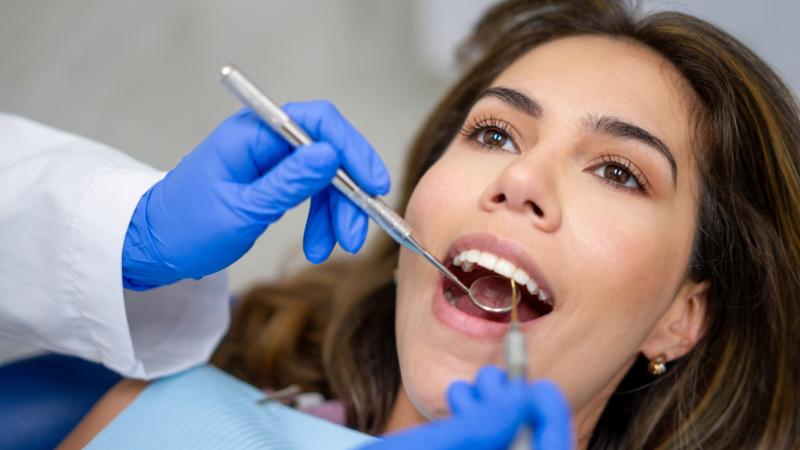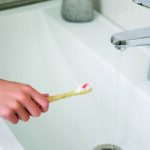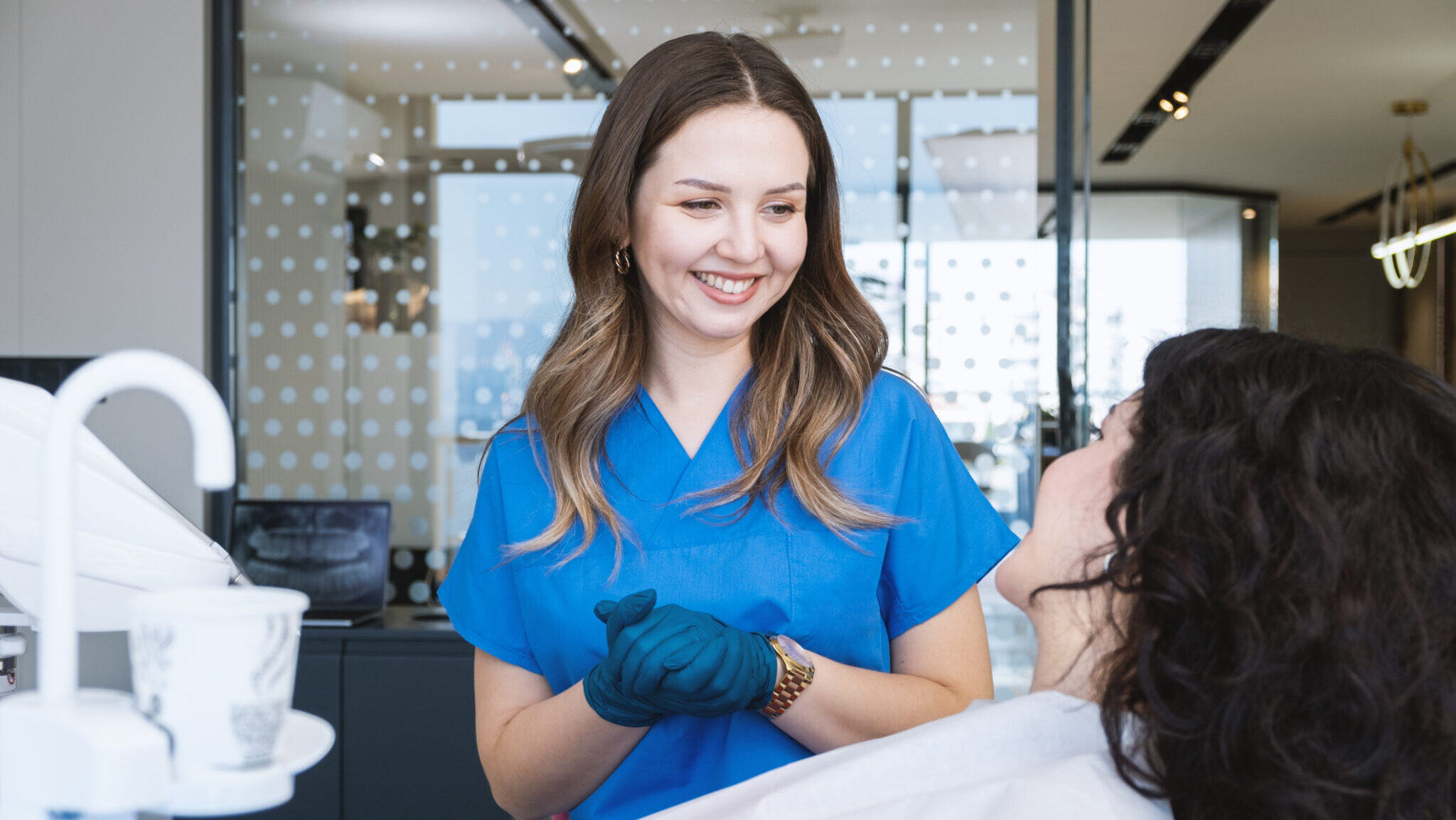
January 28, 2022
by Gabriele Maycher, CEO, GEM Dental Experts Inc. BSc, PID, dip DH, RDH.
Still confused about the 2018 AAP Periodontal classification? Never fear! The next few monthly columns will review some of the most important updates made to the industry’s global periodontal guidelines to help hygiene teams achieve the highest level of care. Once we have exhausted this topic we will move onto other questions about the process of care. If you have any specific questions, you would like answers to, please let me know.
Q: When trying to find the site of greatest loss using clinical attachment loss (CAL) to stage a periodontitis patient, I’m having a difficult time getting this measurement. Is using radiographic bone loss a better option?
A: This is an ongoing debate among clinicians. Before I offer my advice, let me walk you through some key observations:
1. The literature is clear. According to the newest case definition, periodontitis is characterized by “microbially associated, host mediated inflammation that results in loss of periodontal attachment. This is detected as clinical attachment loss (CAL) by circumferential assessment of the erupted dentition with a standardized periodontal probe with reference to the cementoenamel junction (CEJ)1”
The accepted threshold for diagnosis is:
- >2mm CAL, Interdental and detectable at ≥2 non-adjacent teeth, or
- Facial or lingual CAL >3mm with probing depth >3mm detectable at ≥2 teeth.2
2. CAL is not consistently detectable. One of the primary concepts behind periodontist diagnosis is the notion of “detectable” interdental CAL. In other words, the clinician must be able to identify areas of attachment loss either by visual detection or probing. The problem is, each operator may reach a different conclusion based on his or her skills or other oral conditions—such as the presence of calculus—that could either make detection easier or much more difficult.1 It’s also not unusual for other non-periodontitis cause to exist, including extraction of a third molar, gingival recession due to trauma, and vertical root fracture to make CAL difficult to determine.1
3. Gingival recession is not a reliable indicator. It turns out that gingival recession is extremely common and a very unreliable criterion for determining CAL, especially in our older patients. In fact, recent surveys revealed that “88% of people aged ≥65 years and 50% of people aged 18 to 64 years have ≥1 site with gingival recession”.3
4. Probing equipment and technique is not standardized. When calculating CAL, the tip of the probe always penetrates into tissue below the sulcus. 4 “In a patient with a healthy gingiva, the sulcus is histologically at a maximum of 0.5mm depth, but periodontal probing will routinely yield a measurement of between 2.0-3.0 mm”4 And as the inflammatory status increases, the probing depths are further affected. As well, probe penetration can vary with design and material unless standardized equipment and technique is used. Positioning the probe in the same location from one appointment to another and from one clinician to another is difficult.
So, as you can see, there are a lot of limitations to getting accurate CAL measurements, not to mention the time constraints involved in measuring overgrowth and then subtracting this measurement from your probing depths.
5. Radiographs are not specific enough. When calculating the site of greatest loss for the purpose of staging, there are limitations with radiographs as well. “Radiographs characteristically reveal less bone loss than what has actually occurred; early bone changes are not radiographically visible. Typically, 30% of bone mineral must be destroyed before it can be seen on a radiographic images”5, so radiographs may actually miss detection of mild periodontitis. That said, early diagnosis of stage I periodontitis when the patient is in the “borderland between gingivitis and periodontitis”1 is going to be difficult no matter what.
6. CAL and RBL findings are rarely used in the intended sequence. In the “gold standard” clinical environment, the clinician should be getting the patient’s periodontal assessments prior to taking radiographs and then confirming the presence of interproximal bone loss based on CAL findings. However, right or wrong, this sequence of events rarely happens. Typically, radiographs (bitewings) are taken prior to periodontal assessment, and if determined that attachment loss exists due to periodontitis, a full mouth series (FMS) is taken. It is more common for clinicians to use diagnostic quality radiographic as an indirect and less sensitive assessment of periodontal breakdown to determine the site of greatest loss. Taking into consideration complexity factors influencing the severity of a stage along with utilizing radiographic assessments may be all that is needed to establish the stage.
7. The bottom line: Periodontal probing depths and other clinical finding tend to be subjective assessments dependent on the skill of the clinician. Radiographs, on the other hand, present objective data in which two or more clinicians can observe and align to the same diagnosis. And this is exactly why using RBL to determine the site of greatest loss is my method of choice.
Reference:
- Tonetti MS, Greenwell H, Kornman KS. Staging and grading of periodontitis: Framework and proposal of a new classification and case definition. J Periodontol. 2018;89(Suppl 1):S159–S172. https://doi.org/10.1002/JPER.18-0006
- Papapanou PN, Sanz M, et al. Periodontitis: Consensus report of Workgroup 2 of the 2017 World Workshop on the Classification of Periodontal and Peri-Implant Diseases and Conditions.
J Periodontol. 2018;89(Suppl 1):S173–S182. https://doi.org/10.1002/JPER.17-0721
-
- Cortellini P, Bissada NF. Mucogingival conditions in the natural dentition: Narrative review, case definitions, and diagnostic considerations. J Periodontol. 2018;89(Suppl 1):S204–S213. https://doi.org/10.1002/JPER.16-0671
- Peter C. Fritz, BSc, DDS, FRCD(C), PhD (Perio). Clinical Attachment Level – How to Calculate and Interpret this Important Measurement. October 1st, 201. OralHealth Magazine.
- Darby and Walsh, Dental Hygiene Theory and Practice, 5th Edition, Chapter 20. Pg. 309.Bowen/Pieren, 2018






Leave a Reply
You must be logged in to post a comment.